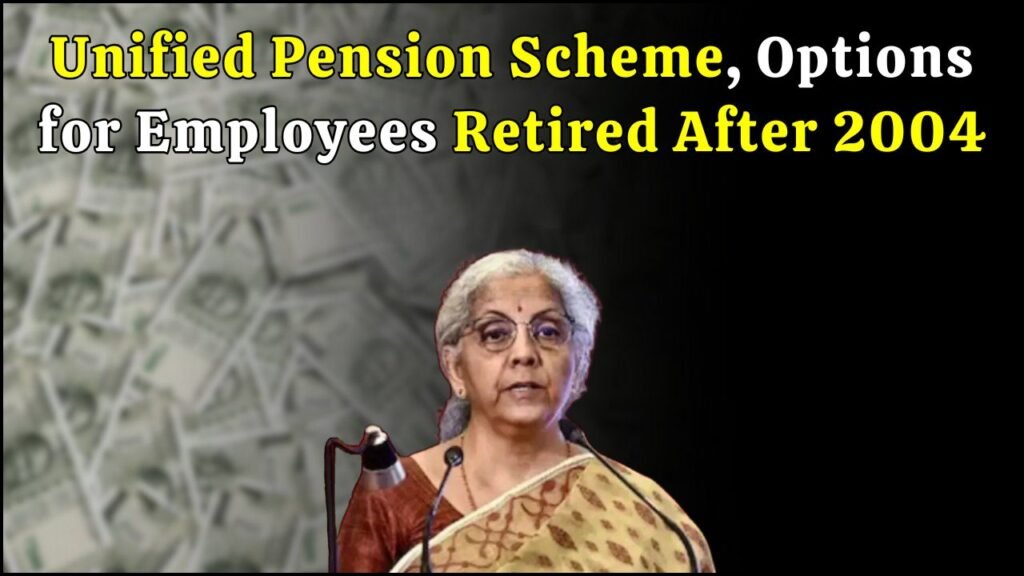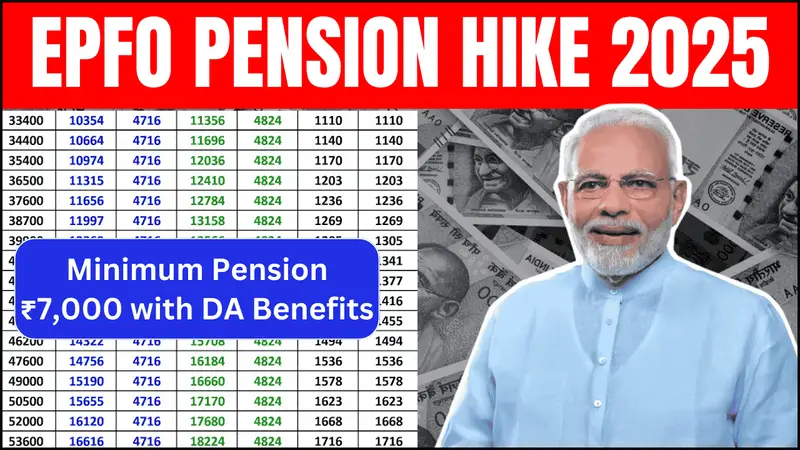
India’s pension framework experienced a major transformation in 2004 with the replacement of the Old Pension Scheme (OPS) by the National Pension System (NPS). This policy shift, which primarily affected government employees who joined service after 2004, has sparked widespread debate and concern. Many retirees from this period feel that the transition has left them with fewer benefits and more uncertainty about their financial security in old age. To address these concerns, the idea of a Unified Pension Scheme (UPS) has emerged, aiming to bring consistency and fairness to the pension system. Here’s an in-depth look at the shift from OPS to NPS, the idea behind UPS, available options for post-2004 retirees, and the ongoing efforts to resolve disparities.
From OPS to NPS: A Major Policy Shift
Before 2004, the Old Pension Scheme offered a predictable and secure post-retirement income for government employees. Under OPS, retirees received a fixed pension amount based on their last drawn salary, with the government solely bearing the pension liability. Employees did not contribute from their salaries, making it a non-contributory and stable system.
However, this changed with the introduction of the National Pension System (NPS) in January 2004. Unlike OPS, NPS is a contributory and market-linked scheme, where both the employee and the government contribute a portion of the employee’s salary to a retirement fund. These funds are invested in various market instruments, and the eventual pension payout depends on the market’s performance. As a result, NPS lacks the security of a fixed pension and has led many employees to feel financially vulnerable in retirement.
What is the Unified Pension Scheme (UPS)?
The Unified Pension Scheme isn’t a formally implemented policy but a conceptual framework aiming to bridge the gap between OPS and NPS. The primary goal of UPS is to harmonize pension benefits across employees, regardless of their date of joining or retirement.
Key objectives of the proposed UPS include:
- Bringing parity between pre-2004 and post-2004 retirees.
- Simplifying pension disbursement processes.
- Exploring hybrid models that blend the reliability of OPS with the flexibility of NPS.
Although a pan-India UPS is yet to be established, some state governments have initiated their own versions of hybrid or revised pension schemes to address employee concerns.
Available Options for Employees Retired After 2004
For those who retired after 2004, there are a few evolving options to enhance their retirement security:
1. Reverting to the Old Pension Scheme (OPS)
Several state governments, such as Rajasthan, Chhattisgarh, Punjab, and Himachal Pradesh, have allowed certain employees to revert to OPS under specific eligibility conditions. These include the employee’s date of joining and require administrative approvals. However, this benefit is not uniformly available and varies from one state to another.
2. Improved NPS Benefits
To make NPS more attractive, the central government has increased its contribution from 10% to 14% for central government employees. NPS also provides tax benefits under Sections 80CCD(1), 80CCD(2), and 80C of the Income Tax Act. Additionally, the introduction of Tier-II accounts allows for partial withdrawals, adding flexibility and liquidity.
3. Proposed Guaranteed Pension Under NPS
The Pension Fund Regulatory and Development Authority (PFRDA) is considering introducing a minimum guaranteed pension under NPS. Though not yet implemented, this proposal would offer government-backed assurance, thereby reducing market-related uncertainties and providing a safety net for retirees.
4. State-Specific Hybrid Pension Schemes
Some states are piloting hybrid pension models that combine elements of both OPS and NPS. Here are a few examples:
| State | Pension Model | Key Features | Status |
|---|---|---|---|
| Rajasthan | OPS Reversion | Full return to OPS for eligible staff | Implemented |
| Maharashtra | Hybrid Model | NPS with minimum pension guarantee | Under Review |
| Punjab | OPS for Selected Departments | Partial reversion to OPS | Active |
| Kerala | Enhanced NPS | Higher employer contributions | Ongoing |
Employee Concerns and Legal Battles
Many retirees have voiced dissatisfaction with NPS, citing unpredictable pension outcomes and lower financial returns compared to OPS. Several legal cases have been filed seeking:
- The reintroduction of OPS for all government employees.
- A declaration that NPS is unconstitutional due to the absence of guaranteed pensions.
- Uniformity in pension benefits, regardless of the employee’s joining date.
These matters are under review in various High Courts and the Supreme Court, while central committees are examining potential reforms.
Pros and Cons of OPS vs. NPS
| Aspect | NPS | OPS |
|---|---|---|
| Pension Type | Market-linked and variable | Fixed pension based on last salary |
| Contribution | Entirely funded by the government | Entirely funded by government |
| Pension Security | Not guaranteed | Fully guaranteed |
| Tax Benefits | Under Sections 80C and 80CCD | Limited |
| Withdrawal Options | Up to 60% lump sum allowed | Monthly pension only |
Key Considerations for Post-2004 Retirees
Those who retired after 2004 can take certain steps to safeguard their financial future:
- Regularly monitor NPS investment performance and adjust asset allocation accordingly.
- Explore state-specific pension rules that may allow reversion to OPS or hybrid models.
- Seek professional advice for optimal annuity and fund withdrawal strategies.
- Keep track of ongoing legal developments and policy updates.
How Can the Government Strengthen the Unified Pension Framework?
Experts suggest the following measures to improve fairness and ensure long-term sustainability:
- Introduce a minimum pension guarantee within NPS to reduce financial risk.
- Encourage states to adopt hybrid models balancing security and flexibility.
- Improve post-retirement healthcare provisions.
- Enhance transparency and raise awareness among employees about pension options.
Final Thoughts
The concept of a Unified Pension Scheme aims to resolve disparities between OPS and NPS while ensuring that all government retirees receive fair and adequate post-retirement support. While the journey towards pension parity is ongoing, the growing recognition of these issues at both state and central levels offers hope for more balanced solutions in the future. Retirees must stay informed, explore available options, and advocate for reforms that promote financial stability and dignity in retirement.

Mangesh Garg is a passionate writer known for captivating stories that blend imagination and reality. Inspired by travel, history, and everyday moments, He crafts narratives that resonate deeply with readers



